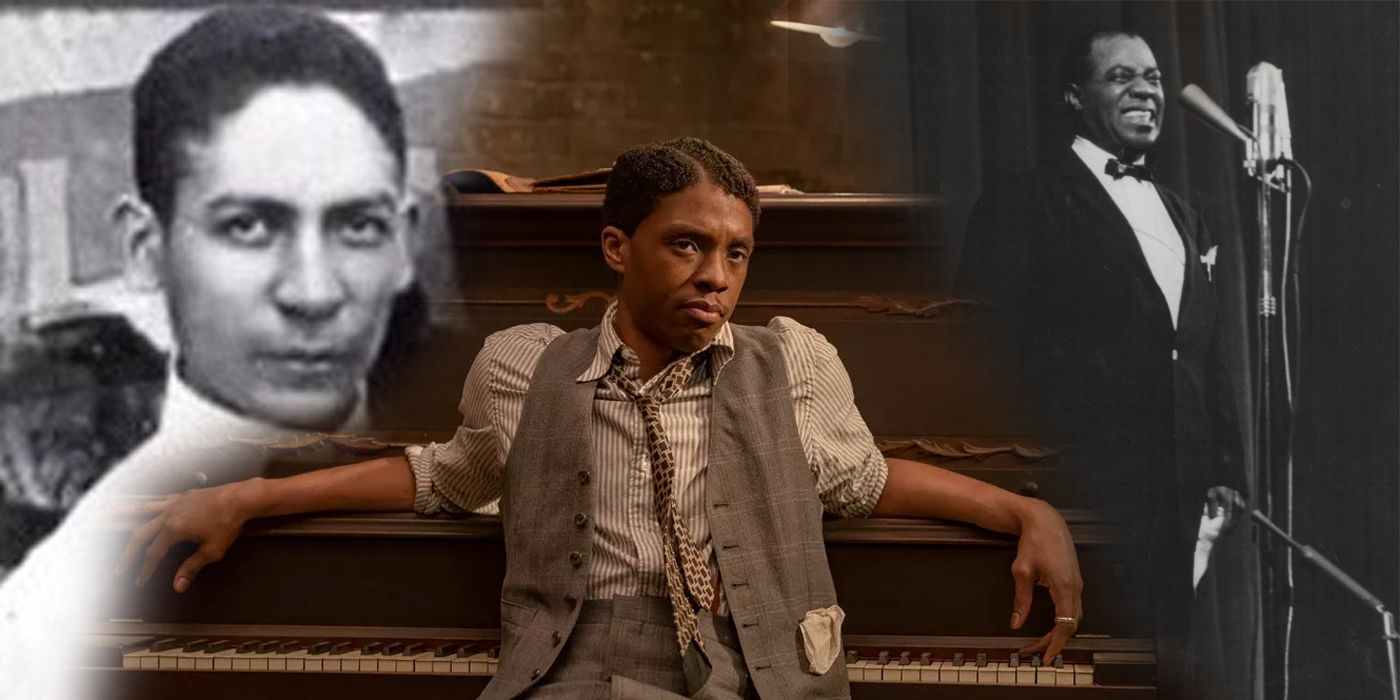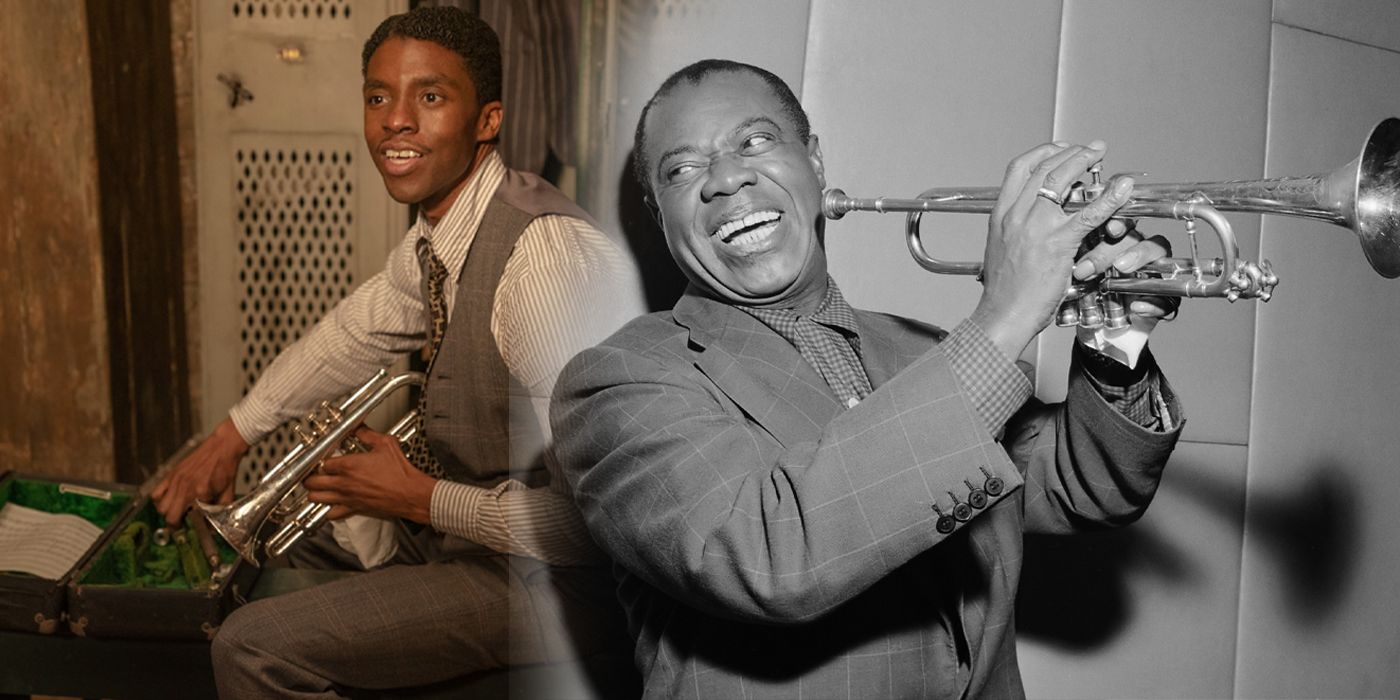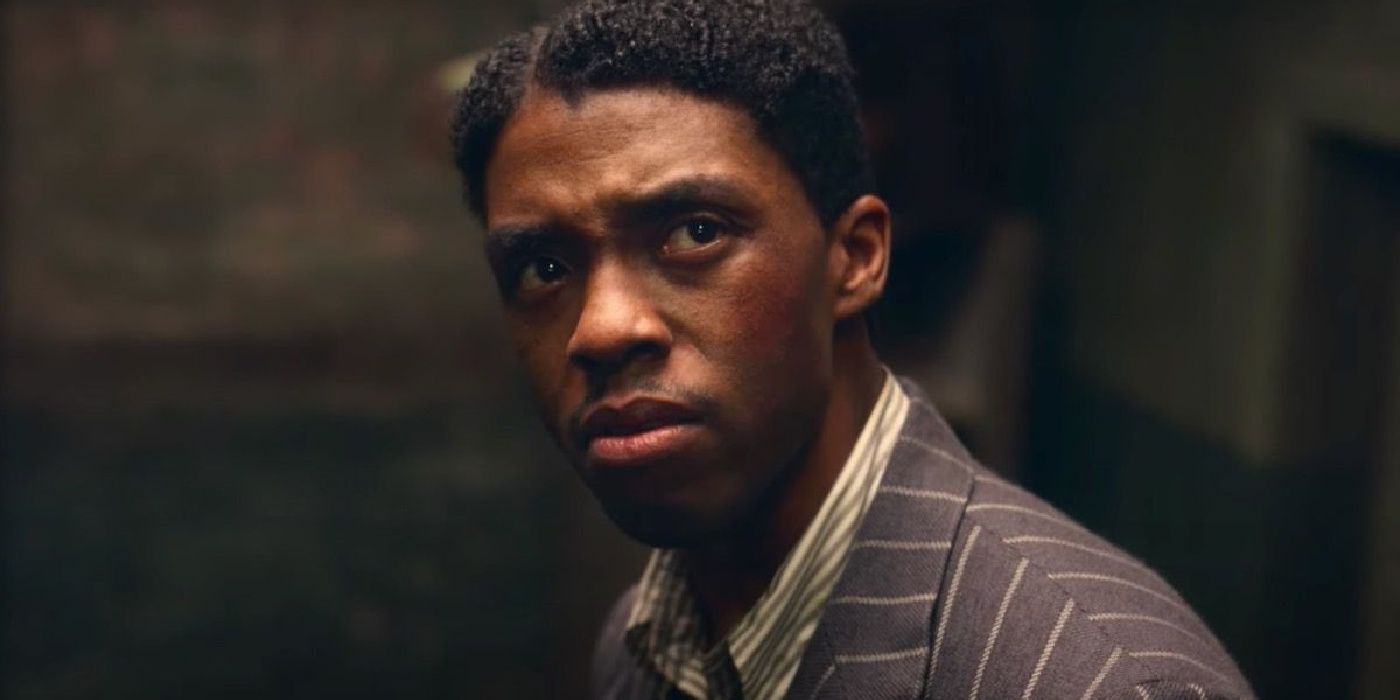Ma Rainey’s Black Bottom: Real Life Levee & “Jelly Roll” Song Explained
Ma Rainey’s Black Bottom stars Chadwick Boseman as Levee, a talented trumpeter and songwriter with high ambitions, who represents Black music history.
You Are Reading :Ma Raineys Black Bottom Real Life Levee & Jelly Roll Song Explained

The late Chadwick Boseman co-stars in Netflix’s Ma Rainey’s Black Bottom as Levee, a character who represents the history of Black music appropriation in America — and is inspired by real musicians. Viola Davis also stars as the titular Gertrude “Ma” Rainey, an icon remembered for her pioneering role in the world of blues. While the titular singer is at the center of the Netflix movie, the story is fictional — including the other characters, like Levee. Yet, the plot is broadly based on a true story: the history of white men exploiting Black musicians.
Netflix released Ma Rainey’s Black Bottom on December 18, 2020. The movie is an adaptation of an August Wilson play from 1982, and, sadly, the Netflix version is as relevant today as the play was almost forty years ago. Ma Rainey’s Black Bottom is set in 1920s Chicago, and predominantly deals with themes of Black art and culture, racial tensions, and power dynamics. All the characters in the story are struggling in one way or another — even the famous Ma Rainey — and the story suggests that interpersonal conflict is a symptom of greater social issues. No one in Ma Rainey’s Black Bottom is a clear-cut villain: even Levee, who commits heinous acts, is painted in a sympathetic light.
Boseman’s exhilarating turn as Levee demonstrates the complex and multifaceted nature of the character, who is not based on a real life figure. There are several real life icons, however, who Levee may have been inspired by. Initially, the hot-headed trumpeter (technically he’s shown playing a cornet) appears to be an embodiment of fast living or an allegory for hubris. As Ma Rainey’s Black Bottom unfolds, however, Levee becomes a clear representation of the ways in which talented Black musicians were both undervalued yet simultaneously exploited by the American music industry.
Real Life Musicians Who Inspired Levee In Ma Rainey’s Black Bottom

While Levee in Ma Rainey’s Black Bottom is best described as a fictional representation of a harmful trend in the music industry, there are some similarities between him and some key historical figures who may have inspired the character. His “Jelly Roll” song may allude to Jelly Roll Morton, a famous and influential early jazz pioneer who wrote “Black Bottom Stomp” and “Jelly Roll Blues.” Morton is best remembered for his claim that he invented jazz (in 1902 no less); while many have refuted the notion, Morton was, at the very least, extremely important in developing and popularizing the genre in the early 20th century. Levee’s arc in Ma Rainey’s Black Bottom shows him pushing the envelope on genre convention, pushing Ma’s slow mournful blues sound more towards jazz and ragtime — and like Levee, Morton was a successful composer with a reputation for arrogance. Unlike Levee, however, he was a devout Catholic. Furthermore, Morton was a jazz pianist, not a trumpet player.
Another possible source of inspiration is Charlie Patton (sometimes spelled Charley), who is known as the “Father of the Delta Blues.” Refinery29 suggests that Levee’s “Jelly Roll” song that gets recorded at the end is based on Patton’s “Shake It & Break It.” Patton had mixed heritage, but by all accounts lived as an African-American, and, like Rainey, is largely considered one of the most important figures in the history of the blues — if not American 20th century music period. Patton was not a trumpet player, however. The choice to have Levee be a trumpet player may be a nod to Louis Armstrong, another highly significant name in the history of American music, and arguably one of the most famous trumpet and cornet players of all time. Not only was Armstrong a player, composer and vocalist like Levee, but Armstrong was also one of Ma Rainey’s contemporaries and even recorded with her. Likely, Wilson’s characterization of Levee drew inspiration from more recent notable Black jazz trumpeters and bandleaders as well, like Dizzy Gillespie and Miles Davis.
What Levee’s Story Really Means

Levee’s story ends tragically — a fitting condemnation of this horrific period in American Black history. After building up expectations that he was on the fast-track to becoming a star in his own right (burning numerous bridges in the process), and after admitting to the band that he was smiling at the white man — who he clearly harbors (understandable) resentment, fear and hatred towards — because he was about to get his due, Levee is blindsided by rejection. Mel Sturdyvant, the white studio owner who had asked Levee to write him some songs, suddenly is disinterested in Levee’s sound. He offers to buy the rights to the songs Levee wrote for a mere $5 a piece (valued at approximately $60 today), but dismisses the idea of Levee and “his” musicians (i.e. other Black musicians) recording the music. In the final scene, a full studio band, all white and even including a banjo and conductor, is shown recording Levee’s “Jelly Roll” song (titled “Sweet Lil’ Baby of Mine” in the Ma Rainey’s Black Bottom soundtrack).
Levee’s experience follows the pattern set in real life by Black musicians in the 1920s and ’30s, whose jazz, gospel and blues music was extremely popular and became a lucrative option for studios and labels — who would often undervalue the worth to the artist, denying Black musicians royalties. Indeed, this issue of discrimination continued well into the 20th century. It’s unclear how aware Sturdyvant was of what he was doing, and if he was being intentionally deceitful to Levee or just wanted to get the young man out of his studio (Levee had, after all, just had a very public blow up with Ma); yet, the shot of the full (white) studio band recording Levee’s song — a scene added for the Netflix movie — does suggest that Sturdyvant at least thought it was good enough to risk paying all those white musicians to record it.
Ma Rainey’s Black Bottom ends with Levee violently attacking Toledo, his older bandmate, for scuffing his yellow shoes. The subtext is clear, however: frustrated and broken from a system of racial inequality, Levee desperately lashes out at someone more vulnerable than himself. Because the young trumpet player is powerless to direct his anger at those who deserve it, the white men who persecute and exploit Black Americans, he misplaces that anger on others in the same circumstance as himself. Levee is not blameless by any means: he argues with his elders in the band, he disrespects Ma, he seduces Ma’s girlfriend, and he acts violently towards his peers without any real provocation. Yet, one can’t help but feel sorry for Levee, who more than anything is a victim of regular, systemic oppression because of the color of his skin.
Link Source : https://screenrant.com/ma-raineys-black-bottom-levee-jelly-roll-song-explained/
